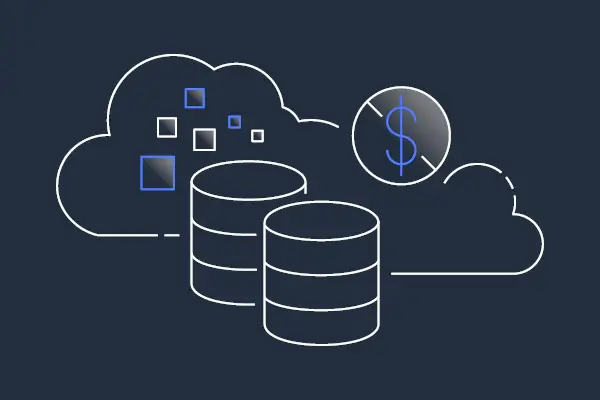· Jay Smith · Articles · 8 min read
AWS Autoscaling - Breaking it Down
Discussing the AWS Snowball service and its role in securely transferring large volumes of data to and from the cloud.

AWS Auto Scaling allows you to automatically scale your application across multiple AWS services like EC2, DynamoDB, and Aurora. It provides a simple interface to optimize resource utilization and performance.
Key capabilities:
Application scaling across services
Manage and optimize cloud resources
Maintain performance and availability
Predictive scaling based on demand forecasts
Cost optimization - pay only for required capacity
Flexibility and ease of setup
With Auto Scaling, you can ensure your application has the right amount of resources to maintain optimal performance at the lowest possible cost.
Key Components of Auto Scaling
There are several key components that make up the Auto Scaling service:
Auto Scaling Groups (ASGs)
Logical pools of resources like EC2 instances
Defined with min, max, desired capacity
Launches/terminates instances based on demand
Launch Configurations
Template that defines an EC2 instance
Specifies AMI, instance type, key pair, security groups, etc.
Launch Templates
Newer way to configure instances
Supports versioning, multiple instance types
More advanced features than launch configs
Scaling Policies
Rules that define when/how to scale ASG
Types:
Target tracking - scale based on metric
Step scaling - scale in/out in increments
Simple scaling - scale by set adjustment
Scheduled - scale on schedule
Predictive - scale based on forecasts
With these core components, Auto Scaling provides a flexible and automated way to manage scaling events. By defining ASGs, launch configs/templates and scaling policies, you can ensure optimal performance and cost efficiency.
How Auto Scaling Works
Auto Scaling dynamically adjusts capacity by performing scale out and scale in events:
Scale Out
Adds capacity to the ASG. Triggered by:
Manual capacity increase
Scaling policy threshold breached
Scheduled scaling event
When a scale out event occurs, the ASG launches new instances using the launch config/template.
Scale In
Removes capacity from the ASG by terminating instances. Triggered by:
Manual capacity decrease
Scaling policy threshold breached
Scheduled scaling event
Maintaining Performance
Auto Scaling ensures optimal performance and availability using:
Target tracking policies to maintain utilization levels
Predictive scaling to forecast demand changes
Automatically replace failed instances
Distribute traffic via load balancing
Advanced Features
Lifecycle hooks to perform actions during scale events
Integration with other AWS services like SQS -Notifications on scaling events
Auto Scaling provides automated and efficient management of resources. By leveraging features like predictive scaling, lifecycle hooks, and load balancing, Auto Scaling can maintain high performance and availability as demand fluctuates.
IV. Benefits of Using Auto Scaling
Auto Scaling provides many benefits:
Flexibility and Ease of Setup
Unified interface to scale multiple resources
Automatic discovery of scalable resources
Predefined strategies to optimize for performance or cost
Quickly view utilization and scale resources across services
Fully managed - automatically creates scaling policies
Auto Scaling makes it easy to get started and manage scaling with minimal effort.
Cost Optimization
Scale resource capacity up or down to precisely meet demand
Predictive scaling provisions the right capacity in advance
Only pay for the resources you need
Reduce costs by leveraging Spot instances
Auto Scaling enables you to maximize utilization and only pay for the capacity you require.
Automation and Efficiency
Maintain performance by automatically scaling capacity
Replace failed instances without manual intervention
Forecast demand and proactively scale
Automatically scale a variety of resources like EC2, DynamoDB, Aurora
Streamline and automate scaling workflows
By handling scalability efficiently and automatically, Auto Scaling allows you to focus on your applications rather than infrastructure management.
High Availability
Minimize downtime by automatically replacing failed instances
Distribute traffic via load balancing integration
Provide excess capacity for fault tolerance
Smoothly handle spikes in traffic or load
Auto Scaling keeps your applications highly available and resilient to changes in demand.
Auto Scaling for EC2
Auto Scaling is commonly used to scale EC2 capacity:
Fleet Management
Auto Scaling manages EC2 instances as a fleet and performs actions like:
Automatically replace failed instances
Distribute instances across availability zones
Integrate with load balancers
Manage health checks and instance lifecycle
This provides resilience and high availability.
Dynamic and Predictive Scaling
Auto Scaling allows you to:
Scale EC2s based on metrics like CPU utilization
Define automatic scaling policies to react to changes
Types of scaling policies:
Target tracking
Step scaling
Simple scaling
Leverage predictive scaling to forecast demand
Schedule scaling events on a regular basis
Optimizing Cost Efficiency
Pay-per-use pricing of EC2s
Combine EC2 On-Demand, Reserved and Spot Instances
Leverage Spot and Reserved pricing with auto scaling
Purchase Savings Plans for additional discounts
Scale instances down when not needed to stop hourly charges
Analyze Spend with tools like Cost Explorer
Auto Scaling for EC2 enables both performance optimization and cost efficiency.
Additional Auto Scaling Services
Beyond EC2, Auto Scaling supports:
Application Auto Scaling
Scales other AWS resource types:
Amazon ECS services
AWS Fargate tasks
Amazon DynamoDB throughput capacity
Aurora Replicas
Amazon SQS queue throughput
Custom resources from AWS Lambda
Application Auto Scaling provides granular scaling for individual resources.
Amazon EC2 Auto Scaling
Focussed specifically on EC2 instances
Provides advanced fleet management capabilities
Integrates with EC2 purchasing options:
On-Demand Instances
Reserved Instances
Savings Plans
Spot Instances
AWS Auto Scaling
Unified service that includes:
Application Auto Scaling
Amazon EC2 Auto Scaling
Features like automatic discovery, strategies, predictive scaling
Provides a central interface to scale both EC2 and other AWS resource types.
Integrations
Other services Auto Scaling integrates with:
Amazon CloudWatch - for monitoring and alarms
AWS Lambda - run code in response to scaling activities
Amazon SNS - notifications on scaling events
AWS CloudTrail - track API calls and events
Best Practices
To optimize Auto Scaling, follow these best practices:
Defining Scaling Policies
Choose metrics with 1 minute frequency for fast scaling
Set policies based on business needs and technical limits
Evaluate different policy types like target tracking and step scaling
Test policies in “forecast only” mode before automated scaling
Add scale-in policies to match scale-out events
Properly configured policies ensure scaling occurs when truly needed.
Monitoring and Notifications
Review CloudWatch alarms and metrics regularly
Enable ASG notifications for scale events via SNS
Monitor billing and usage with Cost Explorer
Use instance status checks and ELB health checks
Tag instances for easier tracking
Monitoring provides visibility into scaling activities.
Performance Optimization
Use detailed monitoring for 1 minute metrics
Distribute instances across availability zones
Ensure enough capacity to handle traffic spikes
Pre-warm instances using predictive scaling
Load test your architecture and tune ASG limits
Performance testing aids in sizing and configuring for peak efficiency.
Cost Optimization
Use EC2 reservation discounts and savings plans
Combine On-Demand, Reserved, Spot, and Savings Plans
Scale in/out based on demand patterns
Right size instances based on actual usage
Use EC2 instance scheduling to stop instances
Analyze spend and configure budgets
Continuously evaluate and optimize costs as needs change.
Auto Scaling Configuration
Key steps to configure Auto Scaling:
Create Launch Template
Defines the configuration for instances. Specifies:
AMI
Instance type
Storage
Security groups
Purchase options (on-demand, spot, reserved)
Network settings
Monitoring settings
Tags
Launch templates support versioning and multiple instance types.
Configure Auto Scaling Group
Defines the scale-out settings:
Name
Launch template or configuration
VPC and subnets
Load balancers
Min, max, desired capacity
Scaling policies
Health checks
Notifications and tags
Launch and configure resources based on rules.
Add Load Balancing (Optional)
Create Elastic Load Balancer
Attach ASG to ELB
ELB distributes traffic across ASG instances
Supports high availability and fault tolerance
Define Scaling Policies
Rules that trigger scale out/in events:
Target tracking policies
Step scaling policies
Simple scaling policies
Scheduled actions
Automatically adjust capacity based on demand.
Test and Configure
Simulate load to test performance
Monitor metrics and tune ASG
Adjust policies based on actual data
Enable detailed monitoring
Tag resources and set notifications
Use Cases
Common Auto Scaling use cases:
Unpredictable/Fluctuating Workloads
Applications with variable traffic patterns
Maintain performance during traffic spikes
Reduce costs during low-traffic periods
Leverage predictive scaling to forecast demand
Automatically scale based on metrics like CPU utilization
Auto Scaling shines for workloads with unpredictable usage.
High Availability Applications
Automatically replace failed instances
Distribute instances across availability zones
Integrate with load balancers
Ensure additional capacity for failover
Minimize downtime through redundancy
Critical applications benefit from Auto Scaling’s reliability capabilities.
Leveraging Spot Instances
Reduce costs by using EC2 Spot instances
Predict Spot interruptions and rebalance load
Replace interrupted Spot Instances automatically
Combine Spot, On-Demand and Reserved instances
Smartly leverage Spot along with other purchase options.
Optimizing Costs
Pay based on actual usage by scaling dynamically
Schedule ASG to follow usage patterns
Leverage Reserved Instance discounts
Right-size instances to needs
Use Savings Plans for additional discounts
Analyze spend and configure budgets
Optimize costs by scaling usage precisely to current demand.
Conclusion
In summary, AWS Auto Scaling is a robust and fully-managed service to dynamically scale capacity across various resources. By automatically launching or terminating instances based on demand, Auto Scaling maintains high performance, availability, and efficient infrastructure utilization. Auto Scaling streamlines infrastructure management through automation, allowing you to focus on your applications and optimize costs. With capabilities like predictive scaling, flexible instance management, and automated workload provisioning, Auto Scaling is a powerful tool for workloads of all types.
Here are 10 Frequently Asked Questions and Answers using markdown formatting and incorporating LSI keywords:
Frequently Asked Questions
What is AWS Auto Scaling?
AWS Auto Scaling allows you to automatically scale your resources and EC2 capacity up or down based on demand. It helps maintain optimal performance and availability while optimizing costs.
What are the benefits of Auto Scaling?
Key benefits include:
Achieve high availability and performance
Automatic scaling to precisely meet demand
Optimize costs by using only needed capacity
Easy to set up and manage
Predictive scaling to forecast demand changes
What AWS resources can I scale with Auto Scaling?
You can use Auto Scaling to dynamically scale:
EC2 instances
DynamoDB capacity
Aurora replicas
ECS services
Custom resources via AWS Lambda
How does Auto Scaling work?
It works by performing scale out and scale in events automatically based on metrics, utilization, and scaling policies. This maintains optimal capacity as demand fluctuates.
What are Auto Scaling Groups (ASGs)?
ASGs are logical pools of resources like EC2 instances that can be scaled together. ASGs are defined with min, max, and desired capacity.
How do I get started with Auto Scaling?
Key steps are:
Create a launch template
Define an ASG
Add optional scaling policies
Test performance and configure
What are the best practices for Auto Scaling?
Best practices include:
Choose fast 1 minute metrics
Test scaling policies before automated use
Distribute instances across availability zones
Monitor metrics, set alarms, and enable notifications
How can I optimize costs with Auto Scaling?
Cost optimization tips:
Scale based on demand patterns
Use EC2 Reserved Instance discounts
Combine instance types (On-Demand, Reserved, Spot)
Analyze spend and configure budgets
Does Auto Scaling work with Spot Instances?
Yes, you can use EC2 Auto Scaling to leverage Spot Instances. Features like predictive rebalancing help manage Spot interruptions.
What is Predictive Scaling?
Predictive Scaling uses ML to forecast demand changes. It automatically scales capacity in advance based on predicted metrics.




